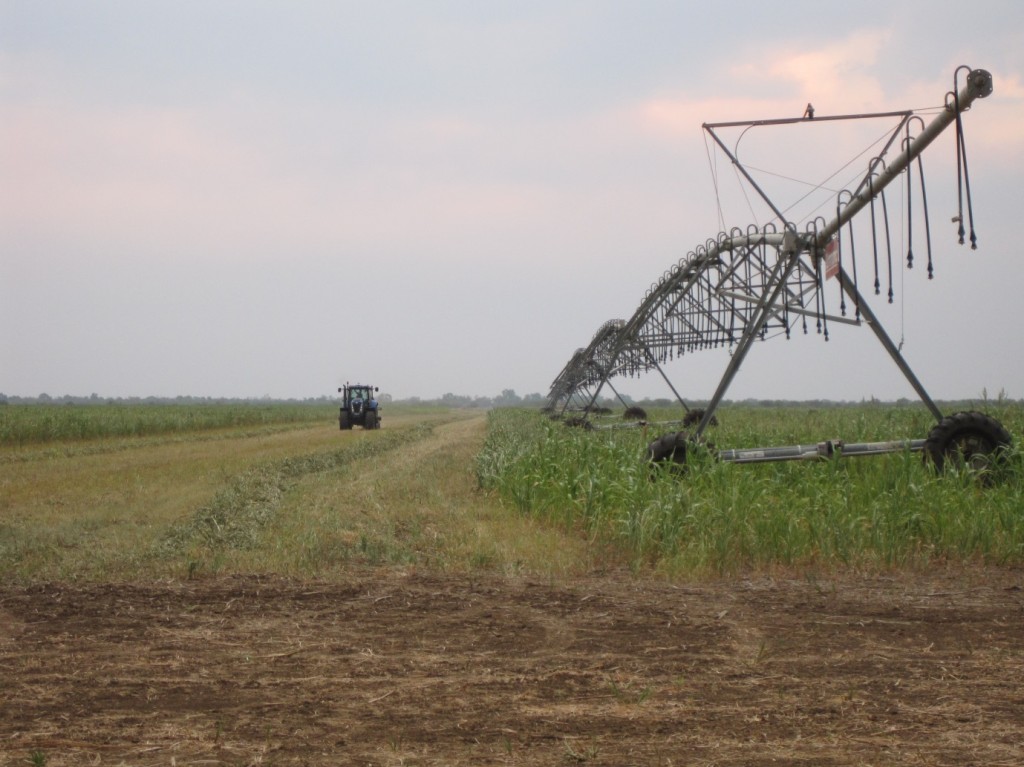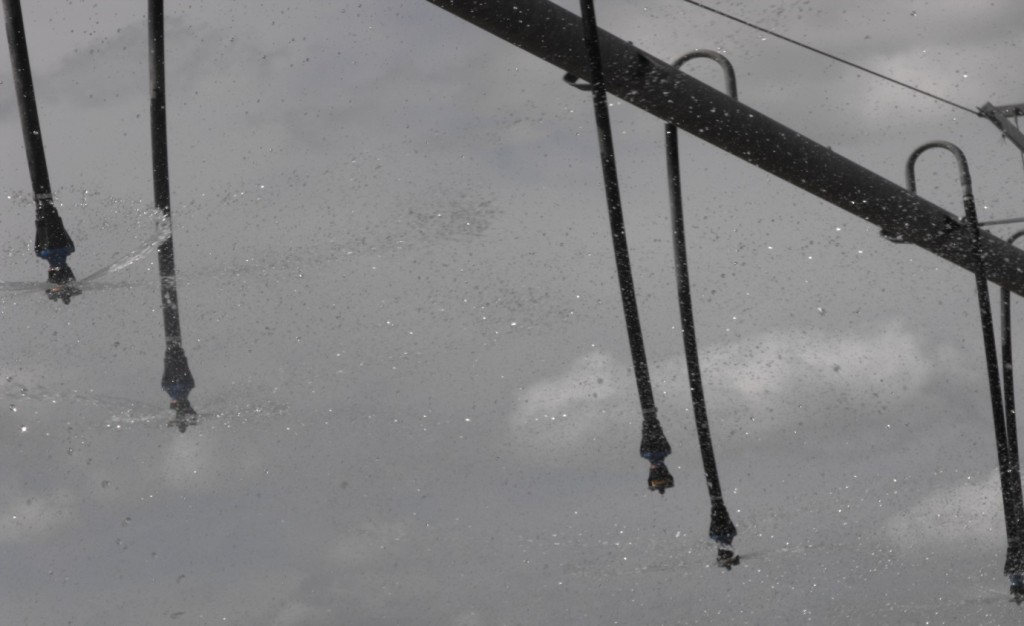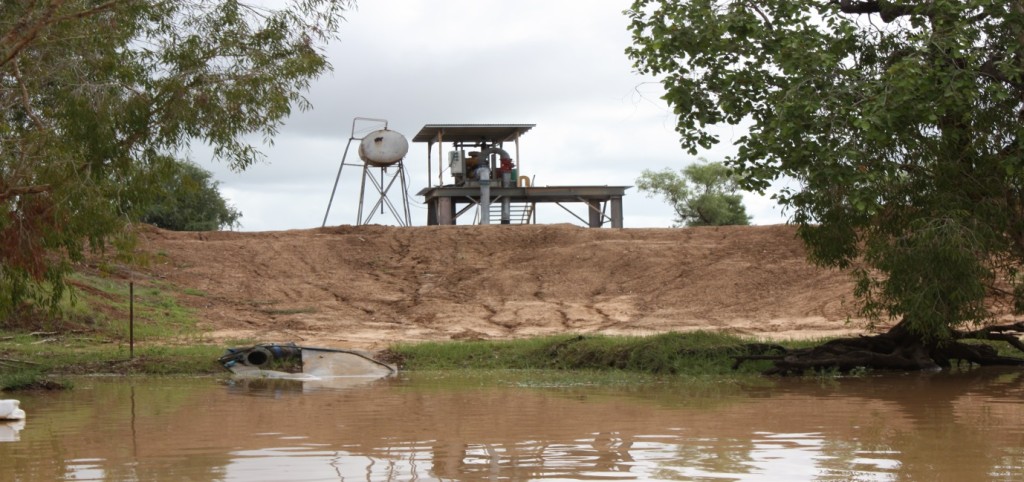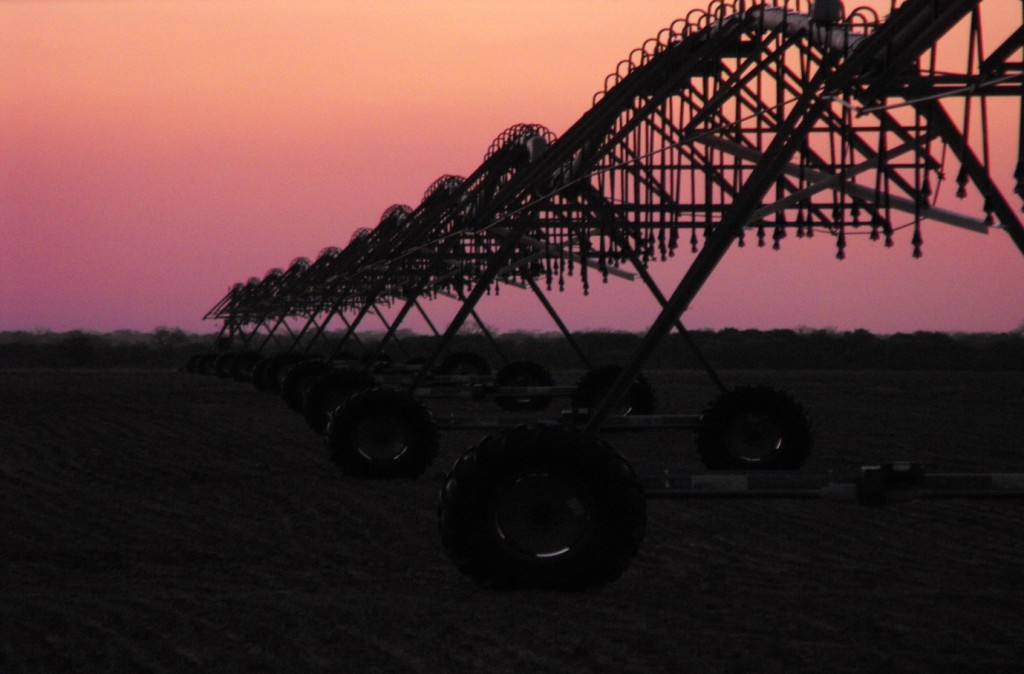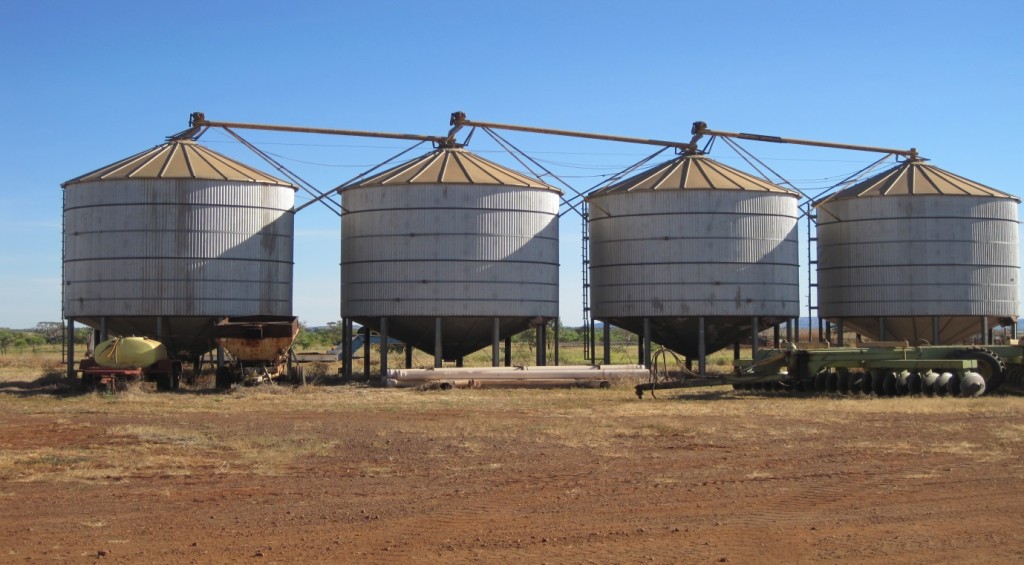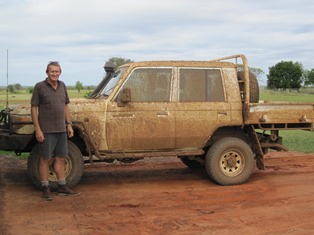The Liveringa Cropping Crew 2013
Host: Liveringa Station
Written by Karen O’Brien – Manager, Liveringa Station.
The 2013 cropping team consists primarily of Barry Chapman (Cropping Manager) and his two hardworking offsiders Jake O’Dell and Lisa Leonhardt.
Barry and his wife Bev joined the Liveringa team quite recently, and are a wonderful addition to the “Liveringa family”. Barry is a passionate, hard working team member whose interesting and varied background ensures he is a positive asset to the company. Bev’s gentle demeanour and lovely sense of humour mean she is simply a pleasure to have around.
Lisa and Jake started here last year and have both impressed us with their work ethic and skills. Jake took on the role as “Second in charge (2IC) – cropping operations” and has proven himself a reliable and competent leader in this role – particularly when in the beginning of the year he had to take on the role of Acting Cropping Manager until a new person was employed in this position. Lisa, an agronomist by trade (and Jake’s partner) is an equally hard working employee whose biggest challenge on a day to day basis is probably working for Jake!
I am handing over today’s hosting role to these guys who will be able to give you an insight into who they are, where they have come from and what it is they do here at Liveringa Station . . .
Karen.
Lisa Leonhardt and Jacob O’Dell
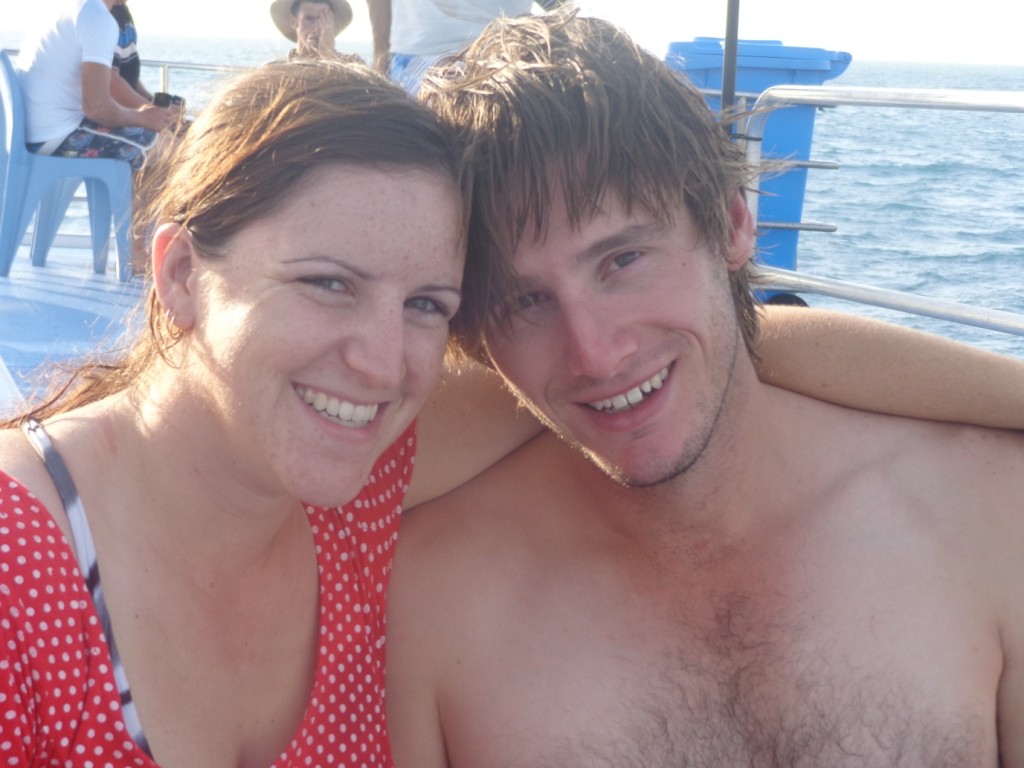 Lisa and Jake on last year’s “End of Season” boat trip.
Lisa and Jake on last year’s “End of Season” boat trip.
Jacob (Jake) and I started our trip around Australia from Albany at the start of May 2012. After some mechanical issues with the car we needed some work for a few months and a friend on Liveringa suggested we call the station. Four days later we were at Liveringa with positions on the farm crew. After a few months of working Jake was offered the second in charge position on the farm, and we are here still. As the 2IC, Jake is responsible for handling the day to day activities to keep the farm ticking over. I am mixing in a bit of agronomy and just general farm hand duties day to day.
Both Jake and I come from farming backgrounds. I grew up on a sheep and wheat farm on the south coast of WA, then after school studied Agribusiness at Muresk. After university I worked in agronomy for Landmark for a few years. Jake finished his schooling at Denmark Ag School and had been working on farming properties for a number of years, working with cropping, cattle, and feedlotting.
The farming side of Liveringa comprises of three established centre pivots, each 100ha and a fourth 100ha pivot recently built that will be functional in 2014. The main crop grown at Liveringa in the recent past has been sorghum for silage. Sorghum is still our main crop, but we are starting to branch out, trialling a number of crops including grain crops such as maize and lupins for feeding to cattle. We are also looking to branch out into other options such as horticultural crops of melons and bananas in upcoming seasons.
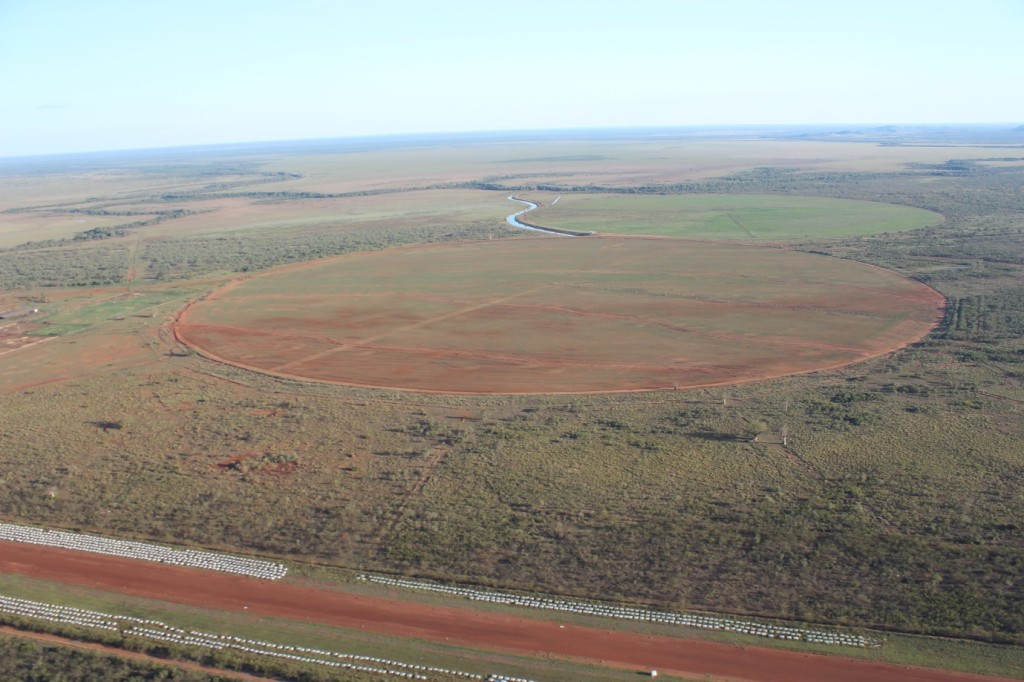 Aerial of two centre pivots on Liveringa (airstrip lined with ‘balage’ in foreground) .
Aerial of two centre pivots on Liveringa (airstrip lined with ‘balage’ in foreground) .
The cropping history at Liveringa has been a long one, with approximately 50,000 acres of freehold land laser levelled and irrigated via channels in the era of Jack Fletcher. Sorghum, rice and many other crops were grown here and on a very large scale to support the large feedlot that was being run at the time. Significant infrastructure such as the Barrage and the 17-Mile Dam were built and utilised to their full potential. There is still a lot of evidence of those activities here today, and I’m sure more than one ringer has run a foul in hidden irrigation channels while chasing cattle. The majority of this land is used only for grazing at this time, as the cost of getting it all up and running again would be substantial.
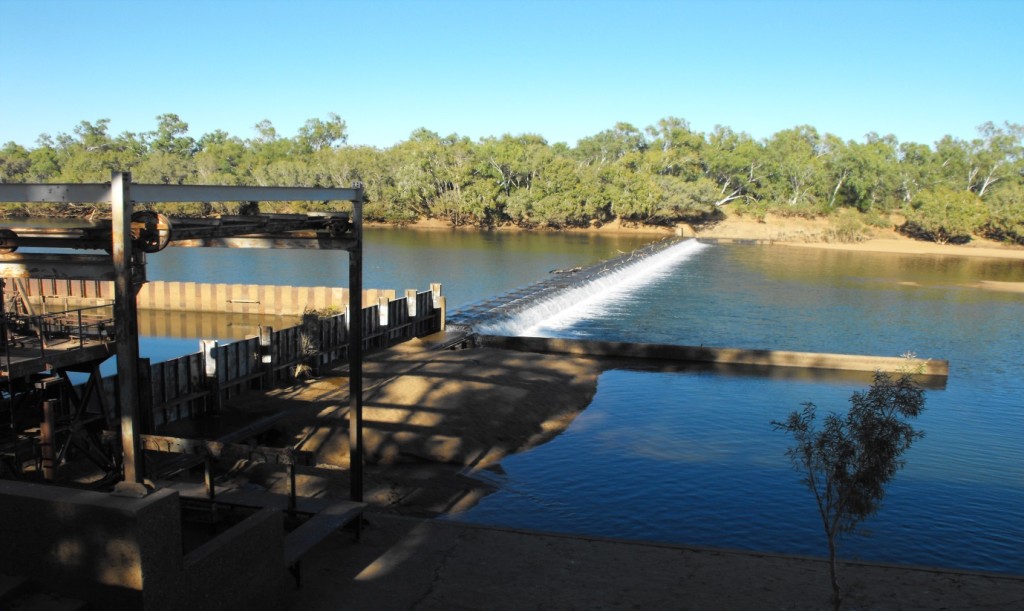 The Barrage on the Fitzroy River (our southern boundary).
The Barrage on the Fitzroy River (our southern boundary).
The farming setup here is very different from previous experiences both of us have had. Being able to control the rainfall on our crops is a great experience, but the challenges are very different. The native wildlife is one of the largest trials we face, birds and pigs mainly. While we have rainfall we can control most of the year, a poor wet season like the one experienced in 2012-13 means that we are running low on water and we need to plan out our usage carefully. The warmer conditions mean that crop types are different to anything Jake and I have experienced before, but we are learning quickly.
Nature has an odd way of fighting back here, harder than other areas I have seen. If we do not crop an area for a couple of seasons, it is quickly reclaimed by scrub. The infrastructure still standing from Jack Fletcher’s era shows signs of damage from huge floods that have washed through, despite the amazing strength of them. There are also just the strategic challenges we face. It takes a week for parts, chemicals, and fertilizers to arrive from Perth, if it is in stock there to start with. This can mean lots of down time if we haven’t got the parts in stock before harvest and seeding. Thanks to our awesome mechanic Terry though, these breakdowns are as short as they can be!
 Jake walking along levee bank – looking at rising flood on the flood plains.
Jake walking along levee bank – looking at rising flood on the flood plains.
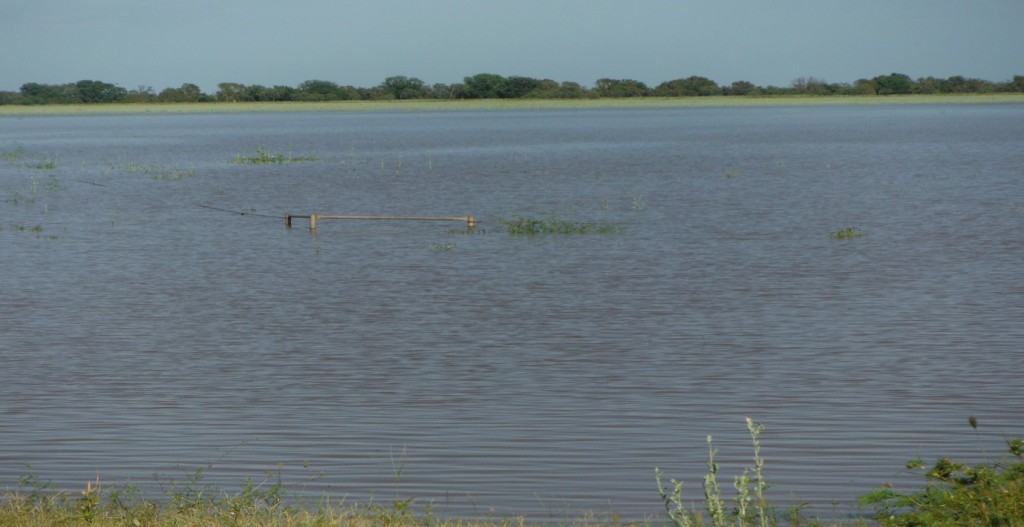 Submerged fence line during flood.
Submerged fence line during flood.
The general life on the station is another reason we have stayed on here. The people are wonderful and supportive. There is a good social atmosphere amongst all the employees here no matter which area you work in. The Fitzroy River means good fishing for those that way inclined and we are not too far away from Derby and Broome to ensure stir craziness can’t set in too much. Thanks Liveringa for the opportunity to be a part of this great place!
Barry & Bev Chapman
Earlier this year we returned from four years working in the Solomon Islands. We enjoyed the diversity of the culture, the weather, the fruit, and the ocean. It is the polar opposite in conditions and lifestyle to be employed at Liveringa Station. We are no longer surrounded by sea, but red dirt, a shopping trip is far more time consuming than a 10 minute drive to the local fruit and vegetable market, the crocodiles may not be as numerous as elsewhere, but one is more than enough to deter us from a dip in the river to cool down. There are challenges but this quote is appropriate, “Challenges are what make life interesting and overcoming them is what makes life meaningful.”
Never in our wildest dreams did we ever imagine living on a cattle station in the Kimberley, but the opportunity presented itself and we’re glad that it did.
We are both Sandgropers by birth but left Australia for the wilds of Africa in 1989. Returning to Australia after six years in Africa we relocated to Sydney and lived there until 2009.
Now we are here! I can’t say it’s in the “middle of nowhere” because that’s somewhere else, but Liveringa may rate as a fairly close second or third! But the tranquility, the beauty, the environment, and the people who work here are what make Liveringa Station a great place to be.

